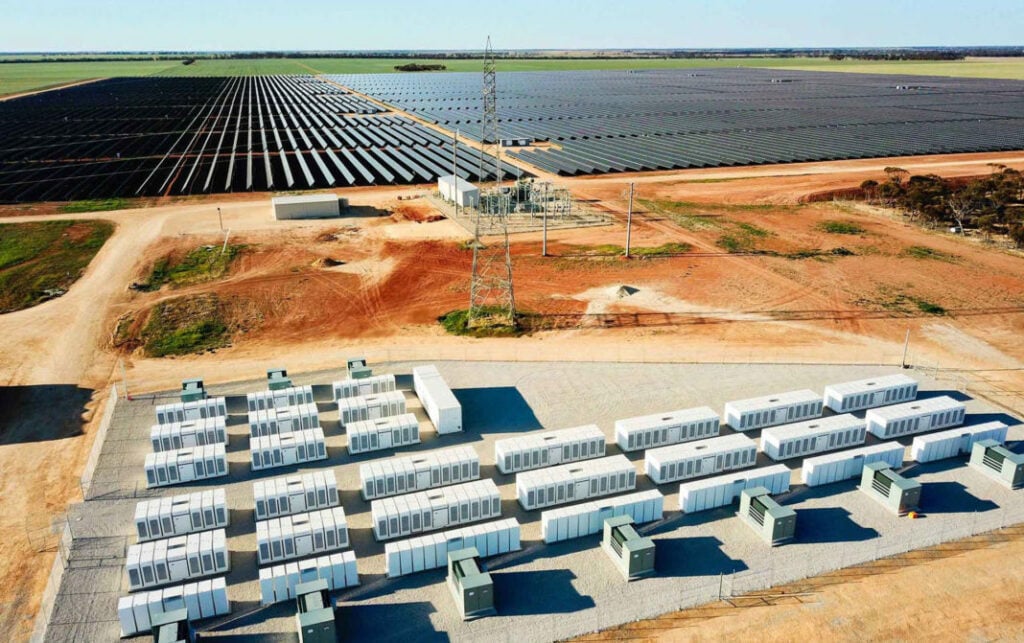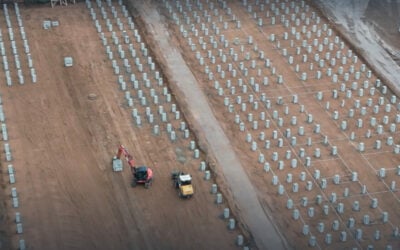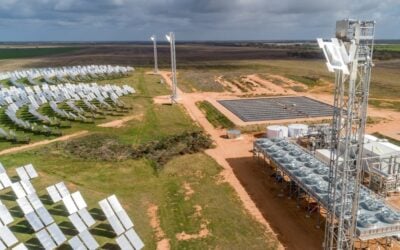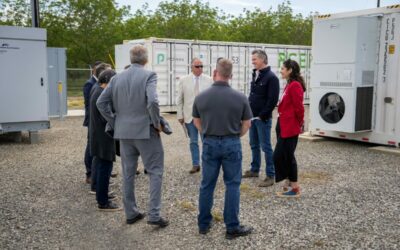
The Australian government’s start of competitive Contracts for Difference (CfD) tenders for dispatchable renewable energy capacity backed with energy storage is an unprecedented step for national energy policy.
That’s the view of energy economics expert Professor Bruce Mountain, who spoke to Energy-Storage.news following the government’s launch of an expanded Capacity Investment Scheme (CIS) last week.
Enjoy 12 months of exclusive analysis
- Regular insight and analysis of the industry’s biggest developments
- In-depth interviews with the industry’s leading figures
- Annual digital subscription to the PV Tech Power journal
- Discounts on Solar Media’s portfolio of events, in-person and virtual
Or continue reading this article for free
The scheme has been described by the Department of Climate Change, Energy, the Environment and Water (CCEEW) as a “national framework to increase new investment in renewable and clean dispatchable energy projects”. Its emergence has been on the cards since at least the end of last year, when Commonwealth energy minister Chris Bowen and his counterparts at state level agreed the rollout of the scheme in principle.
While in its early stages it had been envisaged as a means of support for around 6GW of generation, following modelling by the Australian Energy Market Operator (AEMO), that target has been greatly increased after a period of consultation during August.
It will now underwrite projects that will deliver a total of 32GW, comprising 23GW of variable renewable energy (VRE) generation and 9GW of dispatchable capacity, the latter equating directly to that level of energy storage deployment.
Essentially, the Commonwealth will create a Contracts for Difference (CfD) structure through which tender participants bid a strike price, and payments will flow two ways based on the difference between that strike price and the spot price on the National Electricity Market (NEM), covering Australia’s major interconnected states.
Already, some investments have been supported by the scheme in New South Wales (NSW), where a recent tender for firming capacity to enable integration of solar and wind VRE was backed by the CIS and saw wins for 2,800MWh of battery storage alongside three virtual power plant (VPP) projects.
The scheme gets its full debut in the coming months, with the launch of major tenders seeking 2,400MWh capacity from developers in Victoria and South Australia expected in December and awarding contracts before the middle of next year.
“The Australian Government’s Capacity Investment Scheme is the biggest news in Australia’s electricity policy for as long as we can remember,” Professor Mountain, director of the Victoria Energy Policy Centre (VEPC), told Energy-Storage.news this morning.
Mountain, who previously welcomed the news of the scheme’s expansion to its current size, and its exclusion of fossil fuel resources from eligibility to bid in its competitive tenders, said the CIS announcement is significant for three main reasons.
The first is its scale. Contracting 32GW of new electricity production from the Commonwealth “is unprecedented in the timescale that they are talking about,” Mountain said, representing an “enormous number”.
“The second is that it’s being funded effectively by the taxpayer. The counterparty to these contracts is the Commonwealth Government, not a certificate obligation that retailers need to acquit.”
That’s a massive change in the allocation of risk, putting the financial cost onto taxpayers who will bear “almost all price risk associated with new renewable energy generation,” rather than electricity consumers.
The third is that the scheme has been envisaged as a Contracts for Difference (CfD) structure, which has only been seen at state level in Victoria and on a much smaller scale than the new national rollout. A change, Mountain said, which “fundamentally rearranges the relationship between the Commonwealth and the states”.
“This new policy puts the Commonwealth directly in the firing line of the industry. It’ll be taking on enormous financial obligations and working with the states. In practice, they’ll be working against each other at times and other times they’ll be working together, to ensure that the necessary consents and approvals and transmission augmentation occurs. That Commonwealth-state interrelationship is a first in Australia,” Mountain said.
“So on those three dimensions, it’s enormous change.”
‘Supercharged’ CfD scheme
Another expert similarly commented that the decision to “supercharge” the CIS would minimise “negative impacts on consumers”, and would be “the most equitable solution for all of us during this once-in-a-lifetime energy transition”.
Stephanie Bashir, founder and CEO of consultancy Nexa Advisory, told Energy-Storage.news that the extension of the CIS “gives investors the certainty they need to accelerate our energy transition, a clear on ramp to the sunset of the Renewable Energy Target (RET, which ended in 2020) and few flow on effects to other investors, so it won’t distort the market”.
“Supercharging the CIS to 32GW is a pragmatic and cost-effective solution for households, business and the government. It will incentivise renewable energy and firming capacity, and it will do so in a timely way,” Bashir said.
“Shoring up new renewables and storage will go a long way towards meeting our 2030 climate targets and, importantly, it ensures reliable and secure replacement generation is in place as ageing and unreliable coal power stations shut.”
National trade association Clean Energy Council (CEC) also welcomed last week’s announcement, with CEO Kane Thornton describing it as “a significant commitment that is intended to put Australia back on track to achieve the Government’s policy of 82% renewables by 2030, replacing ageing coal-fired generation with cheaper renewable energy and driving down power prices”.
“Investment in renewable energy has been in gradual decline since the Renewable Energy Target – a policy that delivered substantial new investment – was met in 2020. The rate of investment slowed more dramatically over the past year as a result of higher project costs, frustrating permitting processes, a congested grid and intensifying global competition in the race to net zero.
“While renewable energy remains the lowest cost form of new generation, there is a clear role for government to facilitate the enormous levels of investment needed to transition our energy system,” Thornton said.





